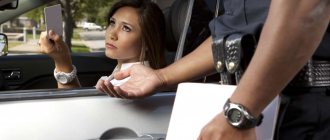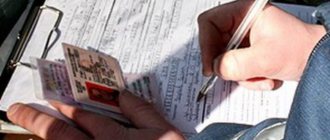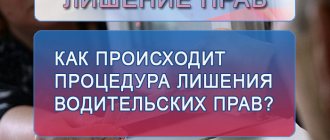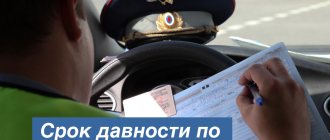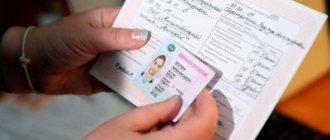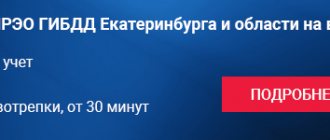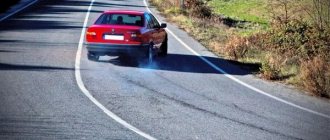A huge number of accidents on the roads happen due to drivers who drive while drunk or under the influence of drugs. In this form, a person cannot adequately assess the situation on the road. And therefore dangerous for other road users. If a driver is caught driving while under the influence of drugs, he may lose his license in 2021.
What is drug intoxication?
Drug intoxication is an altered state in which a person is under the influence of psychotropic and narcotic substances. At this moment, the driver may feel relaxed, euphoric, and joyful. Auditory and visual hallucinations also occur. Some types of drugs cause severe inhibition of the nervous system, as well as depression of basic functions. In this form, a person becomes extremely dangerous and can cause the death of other road users. The main symptoms of using illegal drugs in 2021 are:
Attention! If you have any questions, you can chat for free with a lawyer at the bottom of the screen or call Moscow; Saint Petersburg; Free call for all of Russia.
- Lethargy or excessive activity.
- Violation of perception of reality, behavior that does not correspond to the situation.
- Changing pupil size.
- Redness of the eyes.
- Poor coordination of movements.
- Incoherent speech.
- Hand trembling.
- Change in skin color.
- My eyes can often fluctuate involuntarily.
- The driver will not be able to touch his nose with his eyes closed.
In order to send a driver for a medical examination in 2021 if there is a suspicion of drugs in the body, there must be at least 3 of the signs listed.
If you have already agreed to a roadside urine test. How to avoid "divorce"?
If the driver has already given his consent to undergo a rapid urine drug test, then one should expect that in 95% of cases the test will be positive, and it does not matter whether the driver has used illegal substances or not. Since the road test itself is not legal, it is used by unscrupulous inspectors to obtain bribes by falsifying the test results. Therefore, in order to “not get caught,” the driver must adhere to the following plan:
- Insist on a medical examination by a doctor at an appropriate medical institution. In this case, the inspector is obliged to draw up protocol No. 92 “On referral for a medical examination” (clause 137 of Order of the Ministry of Internal Affairs of Russia dated March 2, 2009 No. 185). In the protocol, the driver, if he is innocent, must indicate that a traffic police officer stopped his car to check his documents. The driver should also write that the suspicion of drug intoxication is unfounded and the inspector’s accusations of violating driving rules are unlawful. The driver also has the right to request the services of a lawyer.
- After drawing up the protocol, it is signed by all parties to the examination, and the driver receives a copy of the document. Then he is sent for a medical examination in the car of a traffic police officer in accordance with paragraph 137.4 of Order No. 185 of the Ministry of Internal Affairs of Russia dated March 2, 2009.
- The driver's car must remain at the place where the inspection procedure was carried out, or be handed over to a person who has the right to travel in this vehicle (wife, husband, relative, etc.). The inspector does not have the right to send the car to the impound lot, since the driver’s guilt has not yet been proven and he is subject to the Code of Administrative Offenses of the Russian Federation - Article 1.5. "Presumption of innocence".
- The driver does not have the right to independently choose a medical institution for examination. But when carrying it out, health workers must follow the instructions in Order No. 308 of the Ministry of Health of the Russian Federation (see Appendix of Book No. 5).
- First, the doctor will fill out a medical examination report and enter the data into the logbook. Afterwards, he will conduct a preliminary express test for drug levels in the blood using a special test strip.
Important! If the driver doubts whether the inspector and the doctor conducting the examination are in collusion, he has the right to demand a license from the doctor to practice medicine. You can also request documents confirming the serviceability of the technical means and instruments with which the examination is carried out. If the driver is refused permission to review the documentation, then he is probably being deceived.
- If the test strip during the examination gave a positive result, indicating the presence of drugs in the body, then in order to make a final verdict, the doctor must send the sample for a confirmatory test to a chemical-toxicological laboratory. The analysis result will be issued within 3–7 days. It is this analysis that is considered correct, since it is as accurate as possible, even if the strip showed a different result.
- Based on the results of the tests, a medical examination report on the state of intoxication of a person is drawn up in three copies, one of which is received by the driver, the second by the inspector, and the third remains in the medical institution.
- If, as a result of the examination, the fact of the driver’s innocence is revealed, then the inspector is obliged to bring him to the location of the car, no matter whether it was moved from the inspection site or remains there (according to paragraph 137.5 of the Order of the Ministry of Internal Affairs of Russia dated March 2, 2009 No. 185). Also, the driver of the car has the right to file an official complaint against the traffic police inspector to his superiors, attaching supporting documents to it.
- If the examination reveals that the driver is guilty, but he did not take drugs, then no later than 2 hours later you should visit another specialized medical institution to undergo a repeat procedure. Having received the results of the study, you should prepare for trial.
More on the topic: What should always be in the car?
Why can't you agree?
Firstly, you cannot agree, since conducting the test outside a medical facility is illegal. Test strips can even work for poppy seed buns and barbiturates.
Secondly, the rapid test is a fairly sensitive research method that can also react to a bun eaten by the driver. As a result, morphine may be found in the urine. Therefore, it is better to undergo a medical examination with full tests.
Procedure for deprivation of rights for drug intoxication in 2021
To establish the fact of drug intoxication in 2021, the driver must be sent for examination. This procedure consists of urine and blood tests. Each group of substances has its own permissible concentration value in biomaterials. The procedure for examining a driver’s drug intoxication must be carried out by doctors who have special clearance.
Prohibited substances, the presence of which in the blood will lead to the deprivation of rights in 2021, include:
- Cocaine.
- Amphetamine.
- Marijuana.
- Heroin.
- Opium.
- Morphine.
- Hemp.
- Hashish.
- Cannabis.
- LSD.
The collection of biomaterial is carried out with the participation of witnesses, and the analyzes are immediately sealed and sent for examination. State inspectors cannot be witnesses, otherwise it is considered a violation and the procedure for taking samples is illegal. Video filming is also allowed under paragraph 40 of Order of the Ministry of Internal Affairs No. 664 dated 08.23.17
For medical examinations, stations must be equipped with clean water and a refrigerator for storing tests. Otherwise, the driver can challenge the deprivation of rights and the results of the drug intoxication examination. If there is no mobile unit, the driver must be removed from control and taken to the nearest medical facility where such an analysis can be performed.
If a person refuses to submit biomaterial, then in 2021 he is automatically recognized as being under the influence of drugs, and his case is sent to court for deprivation of the right to drive.
Based on the report of the traffic police officer, as well as the test results, the driver is deprived of the right to drive a vehicle in court, and is also held accountable under Article 12.8 of the Code of Administrative Offenses of the Russian Federation.
During the procedure, the inspector must draw up several protocols, including the removal from driving, the medical examination and the sending of the car to the impound lot.
All protocols must be signed by the driver and witnesses.
The entire procedure includes the following mandatory points:
- Vehicle stop.
- Identification of clinical signs of drug intoxication in the presence of witnesses.
- Medical examination.
- Conclusion with results.
- Creation of an administrative case on the seizure of a certificate.
- Transfer to court.
- Trial.
- Judgment.
- Deprivation of rights for drug intoxication.
In case of any violation of the procedure, the withdrawal of rights is considered illegal.
Procedure for deprivation of driving license for drug intoxication
In their work, traffic police officers are guided by the regulations of the Ministry of Internal Affairs, approved. They detect drug intoxication by external signs. However, to accurately establish the fact, laboratory research is necessary. In this case, the procedure for deprivation of a driver's license is as follows:
- Protocols are drawn up on suspension from driving and sending the driver for examination. If necessary, traffic police officers will take the suspect to a doctor.
- Conducted by MOSO. The procedure is carried out only in a certified laboratory and must follow the rules noted in the city. The fact of drug use is recorded for medical reasons.
- A case is formed and a request for deprivation of a driver's license (VL) is sent to the court.
- The violator is given a decree, after which he submits the driving license to the State Traffic Inspectorate in due time.
How should a driver behave?
According to clause 2.3.2 of the traffic rules, the driver is obliged to comply with the legal requirements of the traffic police inspector. At the request of the traffic police officer, you must leave the vehicle and provide documents. If the inspector declares that you are in a state of intoxication, it is worth asking by what signs he established this - there must be at least three of them.
On the other hand, all possible procedural violations should be recorded. After the inspection, the inspector will offer to undergo MOSO. In this case, the presence of two witnesses is necessary, and video recording must be carried out. If there is a mobile unit, it should be equipped with everything necessary, including a refrigerator. You may require the procedure to be performed in a specialized institution.
If you have doubts about the test results, you should undergo an independent examination as soon as possible. You need to behave calmly, without getting into arguments. Excessive aggression may provoke traffic police officers to be punished for resisting the authorities in accordance with Art. 19.3.
Under no circumstances should you interfere with the evacuation of a vehicle to a specialized parking lot. It is better to agree to transfer control to one of the passengers or call a friend. If the fact of drug intoxication is proven, you need to appear at the court hearing, otherwise the decision will be made in absentia without hearing your arguments.
What are the consequences of refusing certification?
As already noted, refusal of MOCO is not prohibited by law. If the offer to donate biomaterial or go to a doctor is rejected, the inspector will immediately draw up another protocol, but under Article 12.26 of the Code of Administrative Offenses (a fine of 30 thousand plus deprivation of rights for up to 2 years), which will then be submitted to the court along with a petition for deprivation of driver's license. If a medical institution refuses to undergo a study or fulfill its individual conditions, the doctor is obliged to interrupt the procedure and indicate the reason in the journal. All this will be reflected in the act. Both cases are considered a refusal, and the court automatically finds the offender guilty.
It makes sense to refuse MOSO only if you are completely sure that the demands of the traffic police inspector are illegal.
But you will still have to undergo a medical procedure. In this case, a re-examination must be carried out no later than two hours later.
How to behave when deprived?
A person driving when a vehicle is stopped and suspected of having prohibited substances in the body in 2021 must leave at the request of an inspection officer. Next, the inspector must offer to undergo a medical examination, pointing out the symptoms present.
The procedure for depriving a certificate must take place in accordance with the order of the Ministry of Health of Russia dated December 18, 2015 N933. If the standard procedure is violated, everything is interpreted in favor of the violator.
When doubts arise about the reliability of the results of a biomaterial, it is important to get tested and undergo an independent examination as soon as possible. Present the results in court and appeal the deprivation of rights for drug intoxication.
When can you lose your license for drugs?
During the old version of the Order of the Ministry of Health, that is, until 2015, the concentration of the drug in the body was unimportant. Rights were revoked for any amount of drugs immediately upon discovery. But at the moment, medical examination is regulated by Order No. 933n, and in addition to it there is Information Letter TsHTL No. 179-25/12I. According to these documents, the result of a blood or urine test for drugs is considered positive only if their concentration is above the threshold value. That is, the tiny amounts of illicit drugs contained in publicly available drugs or poppy seed buns will show up on a drug test, but will likely not be a sufficient basis for disqualification.
Driver's rights when revoked
In 2021, the accused has the right to film what is happening in order to protect himself in the event of fraudulent actions by traffic police inspectors. The driver also has the right to refuse to undergo a medical examination, but in this case he will automatically be found guilty of driving a vehicle while intoxicated.
If there is no mobile laboratory at the traffic police post, which is equipped with all the necessary devices, including a refrigerator, the violator has the right to refuse to hand over the biomaterial and demand that this be done in a stationary medical facility.
To revoke a driver's license for drug intoxication in 2021, the case is being considered in court. The driver can use the services of a lawyer, especially if he is not sure of the correctness of the examination procedure and the drawing up of protocols.
In any case, when inspectors stop a car and suspect the presence of drugs, even if there are none, experts recommend behaving calmly and not entering into aggressive disputes with traffic police officers. Aggressive behavior can negatively affect the overall situation and additionally add administrative violations to you for resisting the authorities.
Checking for the use of prohibited substances
On site, the inspector can carry out an inspection using a special device solely for the purpose of detecting alcohol. Being under the influence of drugs is detected in several ways:
- examination by a specialist;
- blood or urine test for substances.
If there is visual contact with the driver and the presence of certain signs, the traffic police officer has the right to send him to a medical facility to conduct an alcohol and drug test. The person goes to the place in a traffic police vehicle, and leaves his own vehicle or asks someone to drive it away (if he has appropriate insurance).
Testing for drug intoxication is carried out exclusively in a laboratory that has a license for activities of this kind. The study is carried out twice, with a break of 20 minutes. The analysis is carried out on the basis of biomaterial (urine or blood) of the citizen.
After a medical examination for intoxication has been carried out, a report is drawn up in 3 copies. The driver familiarizes himself with it and, in case of disagreement with the results, has the right to indicate his opinion on the need for an independent examination. It is carried out at your own expense and no later than the next 2 hours. Only in this case will the conclusion be of significance during the trial. Basic rules of driver behavior and nuances of drug testing:
- presence of 2 witnesses during the examination;
- drawing up a protocol on sending for analysis and based on the results of its implementation, if the presence of prohibited substances is revealed;
- the right to disagree with the conclusions of experts and insist on an independent analysis.
Read also: Deprivation of rights for driving while intoxicated in 2021
Is it possible to refuse a drug test? If the driver does not agree to proceed to the laboratory, the inspector will draw up a protocol of refusal. As a result, the person will be punished under Art. 12.26 Code of Administrative Offenses of the Russian Federation.
Driver Responsibilities
First of all, you should not swear or argue with the inspector. It is the driver’s responsibility to get out of the car at the request of the employee and present all documents for the car. Also, after a medical examination, if the fact of drug intoxication is proven, the offender is required to appear at the court hearing. Some violators do not appear in the courtroom, thinking in this way to avoid punishment. In fact, if there is enough evidence of guilt, a decision is made even in the absence of the driver.
The violator must not interfere with the evacuation of the car to the impound lot, except in cases where it is possible to transfer control to one of the passengers in the cabin. The procedure for detaining and evacuating a vehicle is described in detail in Art. 27.13 Code of Administrative Offenses of the Russian Federation.
In any case, it must be remembered that resistance to authorities carries with it responsibility in accordance with Article 19.3 of the Code of Administrative Offenses of the Russian Federation.
Refusal of medical examination
After stopping the driver and checking all the documents, a representative of the authorities, if he is suspected of taking prohibited substances, has the right to demand that he submit biomaterials and check them for the presence of drugs in the blood.
According to Art. 25.7 of the Code of Administrative Offenses of the Russian Federation, for a medical examination for drugs, it is necessary to attract two witnesses, and also to conduct video recording. If the driver refuses a medical examination, this fact must be signed by attesting witnesses in the protocol. If the violator has doubts about the reliability of the examination on the spot, then he is obliged to declare this in front of witnesses.
To stop and test a driver for drugs, several external signs of the presence of narcotic substances in the blood must appear. This may be hand trembling, inadequate state, excessive excitement, confused speech. In addition, the inspector pays attention to changes in the pupils and problems with coordination.
All this is considered sufficient grounds for conducting a medical examination. The inspector has the right to remove the driver from driving a vehicle while under the influence of drugs in accordance with Art. 27.13 Code of Administrative Offenses and deliver the car to a special parking lot. According to the same law, if the driver has a passenger who is included in the insurance and has the right to drive this car, then the driver simply steps aside and the passenger gets behind the wheel.
The offender also has the right to call a relative or the owner of the car to have it taken away. In 2021, the driver will face trial and deprivation of his license for drug intoxication. The fine in this case is up to 30 thousand rubles.
The driver has the right to refuse to undergo a medical procedure if it is carried out with violations. To do this, it is necessary to record the entire procedure on camera and present it to the court as evidence in accordance with Article 12.26 of the Code of Administrative Offenses of the Russian Federation.
If the medical examination is flawed and the suspect does not have any foreign substances in his blood, then the inspector may be punished for fraud.
Examination procedure
Quite often, traffic police officers send drivers who show clinical signs of using prohibited substances to be tested for drug intoxication. For this purpose, the driver of the vehicle is first examined by a doctor or paramedic. Then biological material is collected from him, in this case urine, and then it is examined as part of a chemical-toxicological study, and a rapid analysis is carried out.
To conduct a reliable study, it is necessary to obtain at least 30 millimeters of urine in a special disposable container. The driver takes the test in the toilet room, where conditions have been created that exclude the possibility of substituting biological material.
In addition, in order to exclude falsification of the urine of a driver whom the traffic police suspect of using narcotic substances, within the first three minutes after collecting the analysis, the temperature of this biological material is measured using a special non-contact device, in which automatic registration of the measurement results is planned. You can ensure that the presented biological material is not counterfeit if its temperature is above 30 degrees Celsius.
Based on the results of this study, the doctor draws up a conclusion in which he comes to one of the conclusions: the person was in a state of alcohol or drugs, intoxication was not established, or he refused to be examined.
If the driver’s biomaterials contain a maximum level of chemical substances, then it is officially recognized that he was in an inappropriate condition. Based on the results of the examination for drug intoxication, the traffic police draws up an administrative protocol in which the corresponding violation is entered: driving while intoxicated. The documents are sent to the court, where the issue of depriving the driver of his license is already being decided.
To prove the driver’s guilt, it is enough that 500 nanograms of opiates, 50 nanograms of cocaine, 25 nanograms of cannabinoids, 500 nanograms of barbiturates were found in his biomaterials.
Is it possible to retain your rights if you refuse a medical examination?
In 2021, according to Article 12.26 of the Administrative Code of the Russian Federation, a driver who refuses to test for drug intoxication is subject to a fine of 30 thousand rubles and risks losing his license for up to 2 years.
The traffic police officer records the fact of refusal in a protocol, which is signed by two witnesses and the driver. In this case, the reason why the driver does not want to undergo the procedure does not matter. The very fact of refusal automatically finds the citizen guilty. Therefore, it will not be possible to avoid deprivation of rights for drug intoxication in 2021, and they can only be returned through the court.
Therefore, you should take the inspector’s proposal seriously and not refuse.
The only factor in which a driver’s license can be returned is the established fact that the procedure was carried out with violations. To do this, it is necessary to submit evidence to the court in the form of photographs and videos or the results of an independent examination, which was carried out immediately after the main one.
Punishment for drug use
You can determine what the punishment for driving under the influence of drugs is based on Article 12.8 of the Code of Administrative Offenses of the Russian Federation (CAO RF). The fine for drug intoxication while driving is 30 thousand rubles, as well as deprivation of rights for drug intoxication for 1.5–2 years.
Criminal liability
So, drunk driving is an administrative offense, liability for which is regulated by the norms of the Code of Administrative Offenses of the Russian Federation, however, if other crimes have been committed, which is an aggravating circumstance. It is possible to understand what the penalties for using narcotic substances are based on the essence and circumstances of a particular offense and the presence of elements of the crime. The maximum term of imprisonment is up to 15 years.
Medical examination in 2021
To ensure that the driver does not have the opportunity to challenge the deprivation of his license, the entire medical examination procedure must be carried out strictly according to the law. Otherwise, the court may declare it invalid. The procedure for conducting a medical examination for drug intoxication of a driver is specified in Order of the Ministry of Health No. 933n.
First of all, the inspector must explain in detail to the driver the reason why the examination is being ordered. Before the medical examination, the violator is given a protocol on his suspension from driving.
The behavior of the person driving the vehicle must exhibit symptoms of drug intoxication.
In 2021, the driver has the right to refuse a medical examination by traffic police officers and go to the nearest hospital, where he will undergo all the necessary examinations.
To begin with, in order to exclude the fact of alcohol intoxication, the driver is asked to breathe into a breathalyzer. If the result is positive, the test is repeated after 20 minutes.
Then the mobile station paramedic assesses the driver’s condition externally. For this purpose, tests are used that show the coordination of movement and the reaction of the pupils. An inspection for traces of injections is required.
The suspect is then asked to submit urine and blood tests. Moreover, after delivery, the test tube must be checked within two hours immediately at the place of detention. After this, samples can additionally be sent to an inpatient medical facility.
An act of passing a medical examination for drug intoxication of the driver is signed on the spot. If the citizen does not have prohibited substances in the analysis, the inspector is obliged to deliver him to the place where the vehicle was left.
In 2021, if prohibited drugs are detected in tests, three protocols must be drawn up. One is issued to the offender, the second to the traffic police, and another one to the archives of the institution where the examination for drug intoxication was carried out.
Why is a rapid urine test a good option for the traffic police?
Rapid urine tests, which determine the presence of narcotic substances in the driver’s body, are mainly used as a preliminary urine test during a medical examination by a doctor. Test strips are used as express tests, which allow you to accurately and quickly determine the presence of narcotic and psychotropic substances in the body.
The procedure goes as follows:
- The driver leaves his biological material (urine) in the jar.
- The doctor uses an immunochromatographic research method to determine the presence of prohibited substances in the driver’s urine.
Reference! The immunochromatographic express method allows you to identify 14 types of narcotic substances used by a person within 5 days before the test. The method is based on passing urine through absorbents. As a result, the drug or its breakdown products, interacting with the antibodies of the test, forms an antigen-antibody pair. This pair changes the color of the test strip and signals the presence or absence of a narcotic substance.
Traffic police inspectors also use similar test strips. However, they use a test strip purchased at a pharmacy, which is intended for household use.
The procedure for analyzing urine for the content of prohibited substances of narcotic origin is carried out by traffic police officers in the following order:
- If drug intoxication is suspected, the inspector hands the driver a container for collecting urine, into which he invites him to collect biological material.
- Afterwards, the express strip is dipped into the container. The display of one mark on the strip indicates the presence of drugs in the driver’s body, the appearance of two marks indicates their absence. If the marks do not appear at all, then the test strip is defective.
Some unscrupulous traffic police officers use this method to deceive drivers and receive bribes. However, is this method of checking drivers legal and do inspectors even have the right to carry out this procedure at the place of detention?
More on the topic: Bailiffs wrote off money for a traffic fine - what to do and how to get it back?
Inspector rights
If, when stopping a car, the inspector has doubts about the sobriety and adequacy of the driver, he has the right to ask him to leave the vehicle.
Also, to prove the legality of his actions, the inspector has the right to invite two witnesses and conduct video recording. In case of refusal to conduct an examination for drug intoxication, the inspector fills out a protocol, which is signed by the driver. If the latter refuses to sign, an act of refusal is drawn up. In 2021, an inspector may remove a violator from control if there are several signs of drug intoxication. To do this, you do not need to wait for the results of the examination, but the report must be handed over to the driver.
Is it possible to refuse a urine test and still have your license?
If the traffic police inspector insists on performing an express test on the road, then the driver has the right to refuse it. In this case, deprivation of a driver's license is illegal and the inspector does not have the right to carry it out.
If a traffic police officer demands to undergo a medical examination procedure and the driver does not agree, then for refusal he may be deprived of his license on the basis of Article 12.25 of Part 1 of the Code of Administrative Offenses.
How should the examination be carried out?
The examination procedure is carried out in the following order:
- A traffic police inspector who stopped a driver who is allegedly under the influence of drugs must identify one of the following signs to confirm his condition in accordance with clause 129 of Order of the Ministry of Internal Affairs of Russia dated March 2, 2009 No. 185:
- smell of alcohol on the breath;
- unstable position of the body;
- disruption of the speech apparatus;
- sharp redness, blueness or an unnatural shade of the face;
- inappropriate behavior.
- After identifying at least one of the signs, the inspector has the right to remove the driver from driving a vehicle in accordance with Article 27.12, Part 1 of the Administrative Code. In this case, the driver must write down or photograph the traffic police inspector’s badge number and the details of his service ID. These actions are legal, and they are carried out in accordance with paragraph 3 of clause 2.4 of the Traffic Regulations: persons who have the right to stop a vehicle are required to present a service ID at the request of the driver. The inspector, in turn, must perform the following actions:
- invite two witnesses for examination or make a video recording (in accordance with Article 25.7 of Part 2 of the Code of Administrative Offenses);
- if witnesses were invited, then the traffic police officer, in their presence, fills out protocol No. 91 “On removal from driving a vehicle” (in accordance with Article 27.12, Part 3 of the Administrative Code).
Reference! Protocol No. 91 must indicate the date, time, place, reason for removal from driving, position, surname and initials of the inspector and driver. Vehicle details must also be provided;
- if witnesses were not invited, then in the protocol in the empty field of the column “Witnesses” the driver must put a capital Latin letter Z and in the comments below indicate the following information: there were no witnesses, the driver did not use anything and he does not agree with the inspector about the accusation.
Important! The last sheet of the copy of the protocol must remain with the driver. It must be filled out by the person who drove the vehicle, without amendments by the inspector;
- After drawing up the inspection report, the traffic police inspector may offer to undergo a rapid test at the place of arrest, which can detect narcotic substances in the driver’s urine. However, the driver has the right to refuse, after which the inspector must send him for a medical examination to a specialized institution.
More on the topic: Procedure for conducting a vehicle inspection by a traffic police officer
How to pick up a car from a parking ticket?
Penalty parking is a special area guarded by the traffic police. The vehicle is delivered to the parking lot using a tow truck.
To return the vehicle, you will need to pay the costs of evacuation and provide documents for the car. If the owner is deprived of his driving license for drug intoxication, then relatives and friends can pick up the towed car in his presence. For this you will need the following documents:
- Permission from the traffic police to issue a vehicle.
- Power of attorney for the right to drive a car.
- OSAGO policy.
Until 2021, only those who have a power of attorney could pick up a car from the impound lot. Starting this year, a person who has the right to drive a car can pick up a car in the presence of the owner.
For the first two days after the car is towed, there is no charge for its presence, and therefore you can pick up the car without paying.
If, by the time the owner comes to pick up the vehicle, his license has already been taken away, he can use the services of a tow truck.
How to challenge the revocation of a driver's license for drug intoxication in 2021?
To appeal the decision to revoke a driver’s license for drug intoxication, the offender is given 10 days. During this time, he must provide reasons why he considers the decision of the authority to be unlawful. In order to challenge, it is necessary to submit documents about violation of the procedure for identifying drugs in biomaterials. To do this, you need to film the entire process. Any violation during the detection of narcotic drugs in analyzes is interpreted in favor of the offender.
If the driver is confident of his innocence. Then immediately after the medical examination you should undergo an independent examination for drug intoxication and provide the data to the court.
Signs of drug intoxication
Drug intoxication in a person is a consequence of the use of psychopharmacological and narcotic drugs, after which he feels a surge of strength, peace, various kinds of hallucinations occur, and when the effect of the drugs comes to an end, the person develops weakness, drowsiness, and irritability.
Signs of drug intoxication:
- large or, conversely, constricted pupils;
- redness of the eyes;
- rapid breathing;
- very slow speech;
- pale skin.
If suspicious behavior of a driver on the road is detected and the above signs are identified, the employee has the right to raise the question of deprivation of a driver’s license.
Consequences of revocation of a driver's license
After a court decision on deprivation of rights for drug intoxication, the violator is obliged to submit the driving license to the traffic police within 3 days. The term of imprisonment is determined by a court verdict and ranges from 1.5 to 2 years. In addition, you will have to pay a fine of 30 thousand rubles.
If a person who has been deprived of his rights gets behind the wheel while under the influence of alcohol or drugs and is delayed behind the wheel, then the punishment is provided for by the administrative code of Russia. If an accident occurs with a fatality due to the fault of a driver under the influence of drugs, then the law provides for criminal punishment for up to 9 years. The minimum threshold under Art. 264 of the Criminal Code of the Russian Federation is 4 years.
Driver check
According to the legislative standards for checking a driver detained on suspicion of driving while intoxicated, this process consists of two independent stages. Firstly, if drunk driving is suspected, a police officer conducts an alcohol and drug test using a special device (breathalyzer). If the alcohol concentration is higher than 0.16 mg/l, the driver will be considered drunk. A law enforcement officer draws up a protocol that records the fact of the offense.
Secondly, being under the influence of drugs while driving often results in a referral for a medical examination, which results in an official report that can be used as evidence in court proceedings. An examination for drug intoxication is carried out compulsorily if a person refuses to undergo it voluntarily, and at the direction of various officials. The immediate grounds for ordering a medical examination are the following:
- presence of alcoholic odor;
- speech disorders;
- unsteady gait;
- intense redness of the facial skin.
Medical examination for intoxication is carried out in accordance with Order of the Ministry of Health No. 933n (dated December 18, 2015). According to the accepted procedure, the procedure takes place in several stages. The suspect is examined by a doctor, then the presence of alcohol in the exhaled air is checked with a breathalyzer, and then the citizen’s urine and blood are analyzed.
The procedure for collecting biological material for testing is regulated by special rules and eliminates the possibility of falsifying results. A medical examination for drug and alcohol intoxication is carried out in a special laboratory by qualified staff and takes up to 13 days.
The result of the study is an expert opinion, which can confirm or refute the fact that a person is under the influence of alcohol or drugs. In addition, the conclusion records the degree of intoxication, on the basis of which, during the trial, conclusions can be drawn in the future about the degree of threat that the offender posed at the time of arrest.
The regulatory requirements for the execution of this act are very strict. Any violation leads to the fact that the conclusion can be appealed and declared invalid by the court. Many drivers are interested in whether it is possible to refuse a drug test. It is worth keeping in mind that refusal to be examined by law is equivalent to a person admitting guilt in an offense.
Deprivation of driver's license for drug intoxication for the second time
If a driver who has already been deprived of his license once for driving while intoxicated is caught with the same offense again, the period of deprivation of license is increased to 3 years. This applies to those who were caught in 2021 after the return of their rights. If a person is caught without a permit and while a court decision is in effect, the term increases. If you continually violate the law, your sentence will increase. As a result, the driver may be deprived of his license for life. The fine for repeated violation has been increased to 200–300 thousand rubles.
In addition, in case of repeated violation, the court may impose forced labor for up to 2 years and correctional labor for up to 480 hours.
Permissible limits for narcotic drugs
If there is any doubt about the ability to drive, the driver should take into account the standards for the content of substances in the body. The table below shows the limit values (depending on the type of drug).
Read also: Punishment for driving while intoxicated in 2021
| Name of groups of substances | Concentration ng/ml | |
| over 18 years old | up to 18 years old | |
| Opiates (6 monoacetylmorphine, morphine, codeine, desomorphine, etc.) | 500 | 300 |
| Cannabinoids | 25 | 15 |
| Phenylalkylamines (amphetamine, methamphetamine, mephedrone, etc.) | 50 | 25 |
| Methadone | 50 | 25 |
| Benzodiazepines | 50 | 20 |
| MDMA | 50 | 40 |
| Cocaine | 50 | 25 |
| Barbiturates | 500 | 50 |
| Kotinin | 20 | 20 |
| Synthetic cannabinoids | 5 | 5 |
| Cotinones | 20 | 20 |
| Ethyl glucuronide | 500 | 200 |
How long does drug intoxication last? It is impossible to answer this question unequivocally, since the final period depends on the weight, gender, state of health of the person, as well as the type of substance taken and its quantity.
Can my license be taken away for life?
If a driver is regularly caught without a license to drive a vehicle and under the influence of drugs, then the punishment will increase each time. As a result, they can be deprived of their rights for 50 or 100 years. The result is lifelong disqualification for drug intoxication.
If the driver is detained for such an offense for the first time, he will not face such punishment.
If a violator is detained a third time or more for being under the influence of alcohol or drugs, and he also refuses a medical examination, the citizen risks being left without a license for the rest of his life.
They cannot deprive someone of their rights for life for drug intoxication directly in the courtroom; there is no such law.
Getting your driver's license back after being revoked for drug intoxication
First of all, it is necessary, by court decision, to register with a narcologist. This may be a preventative measure if a detailed violation occurs for the first time. If the driver is detained again, a dispensary registration is assigned. It will be possible to be removed from the last registration only upon receipt of a certificate of physical and mental health that is not affected by prohibited substances.
30 days before the expiration of the period for which the driver's license was confiscated, it is necessary to submit an application to the traffic police authorities for the return of the license. According to the law, if you are deprived of your license while driving under the influence of drugs, you must pass a theoretical exam on your knowledge of traffic rules upon return.
In addition, the following documents will be required:
- Passport or driver's ID card.
- A document indicating that the license was handed over to the traffic police, indicating the date.
- A copy of the court decision on deprivation of rights.
You will also need a certificate from a narcologist about deregistration.
Nuances and features
Unlike previous years, changes have been made to the legislation that differ from previous procedures. Such nuances include:
- If your license is revoked, you must surrender it.
- Tests for drug intoxication are carried out regardless of the driver’s external condition.
- The content of all possible narcotic substances is checked.
- The minimum examination time is 2 hours.
- In 2021, punishment is provided not only for repeated driving while intoxicated, but also for repeated refusal of a medical examination.
- The fine for repeated violations has been increased from 50 thousand rubles to 200–300 thousand.
Nothing has changed dramatically compared to previous years. All innovations for 2021 affected only the list of prohibited substances, since now you can lose your license for some painkillers.
Checking is a piece of cake
He clarified that these devices will only allow one to determine whether a person has consumed alcohol or drugs or not. Is there a reason to send him for a medical examination or can he be released in peace?
Let us remember that the use of such devices has been discussed for a long time. Last year, at the Road 2019 exhibition in Yekaterinburg, these devices were demonstrated to the general public. For example, the alcohol vapor indicator looks like a concert microphone. It fits easily in your fist. There is a funnel on top that you need to blow into. If the exhalation is clear, the device screen will light up green. If traces of alcohol are detected in the exhalation, the screen will light up red.
The procedure for testing for drug use is more complicated. The analyzer of immunochromatographic test systems for detecting narcotic and psychoactive substances in human saliva looks like a regular breathalyzer.
Checking with express tests is just another criterion by which the inspector can understand whether a person needs to be checked further or can be released
A disposable sampler and a disposable chromatography cassette are used for testing. They are printed in front of the driver. There is no need to spit on them. The sampler is a piece of cotton wool on a stick. It is moistened by saliva in the mouth. After which the sampler is inserted into the cassette and fixed in it. And after a few minutes the cassette is inserted into the device. The device will show the result on the screen: it will either write the message “missing” or “requires laboratory confirmation.”
The rapid test detects traces of opiates, cannabinoids, amphetamine, cocaine, methamphetamine, benzodiazipine and ketamine.
Positive indicators of a particular device are not a reason to draw up a report on driving while intoxicated. But there is a reason to conduct a more serious check. Nobody has canceled the usual procedure for testing for intoxication and is not going to cancel it.
If any of the devices shows a positive result, then you must first draw up a protocol for disqualification from driving in the presence of two witnesses or on video recording. Then conduct an alcohol intoxication test. That is, ask the driver to blow into a breathalyzer, which already shows the amount of alcohol in the exhaled air. Then issue a referral for a medical examination. Then conduct a medical examination. And only if the result is positive, draw up a report on driving while intoxicated.
In fact, checking with express tests is just another criterion by which the inspector can understand whether a person needs to be checked further or can be released.
It’s just that to the signs of intoxication that are established by optoleptic methods, such as, for example, instability of posture, slurred speech, redness of the skin of the face, trembling of fingers, as well as the smell of alcohol on the breath, another one is added - the readings of the indicator device. By the way, not everyone can smell alcohol from their breath; the inspector may have a runny nose. The use of such devices will make it possible to quickly carry out, for example, continuous checks that are used on the roads.
But in order to use these devices, it is not enough to purchase them. It is necessary to make changes to the rules for examining drivers, which would include their use in the list of signs of intoxication. Back in July last year, the Ministry of Internal Affairs submitted such amendments for public discussion, but so far they have not become rules.
There have already been concerns that the use of such devices will increase corruption on the roads. But this only threatens those who do not know their rights. Since the readings of this device do not prove anything at all, only ignorance of this can lead to bribes. Let us repeat once again that the examination procedure itself does not change. Moreover, the use of such devices will help reduce cases of unjustified referral of drivers for medical examination. But there are such cases, and they are just more corruption-intensive, because few drivers, without any reason, want to waste time on a trip to a narcologist to take tests.
In just 10 months of this year, 12,490 accidents occurred in Russia due to the fault of drunk drivers. 3195 people died in them. The number of accidents and fatalities is decreasing. Over these 10 months, the number of accidents with drunk drivers decreased by 8.2 percent compared to the same period last year. And the number of deaths in them decreased by 14.5 percent. Nevertheless, the problem remains quite acute. It is not for nothing that the possibility of confiscating a car is now being discussed if the driver is repeatedly caught driving while intoxicated. Such a provision was proposed in the Criminal Code. After all, liability for repeated drunk driving is a criminal offense. It is also included in the draft of the new Code of Administrative Offences. It is assumed that if the drunk driver is not the owner of the car, then the car will still be confiscated, but under an administrative clause.
Infographics "RG" / Alexander Chistov / Vladimir Barshev

